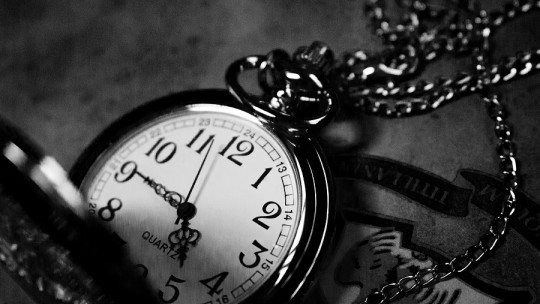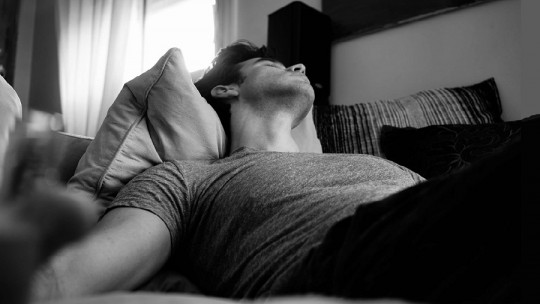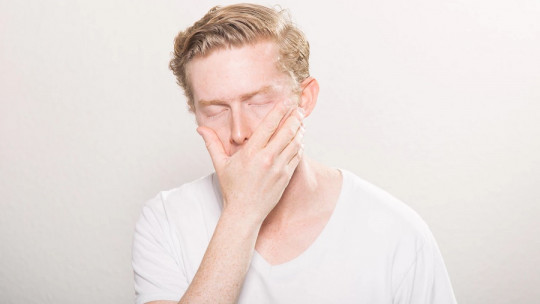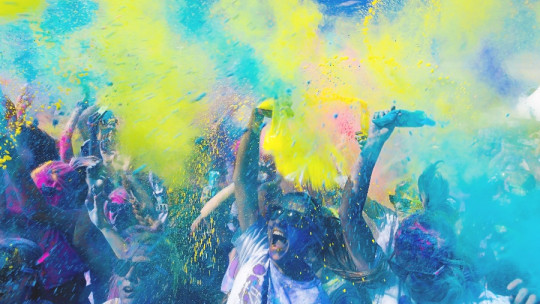
Phobias are, along with depression and anxiety, part of the most common mental disorders.
Although as a general rule they tend to be less disabling than other disorders because the stimuli that generate them are not usually found continuously, in some cases the feared stimulus or situation is much more generalized and can constitute a true nightmare, greatly restricting the person’s performance in various vital domains. This is what happens with phobias such as agoraphobia, social phobia or the phobia that we are going to talk about in this article: anthropophobia
What is a phobia?
Although it may be something more or less known to most of the population, before getting into the subject of anthropophobia it could be useful to specify what it means to have a phobia.
When talking about phobias we are talking about irrational fears of stimuli and situations which may be more specific or general, and which cause a deep level of anxiety and physiological activation that the subject himself recognizes as exaggerated for the level of threat posed by the stimulus in question. This panic and anxiety make the subject tend to avoid approaching the stimulus or situation in question as much as possible, which can have repercussions on their normal functioning.
It is not a vulgar fear but authentic panic that can cause physiological or behavioral alterations such as the continuous flight and avoidance of places where the stimulus could appear or escape from situations in which the stimulus in question appears. In some cases the subject can remain with said stimulus but at the cost of great suffering and anxiety.
There are a large number of phobias, some more limiting than others depending on both the stimuli and the circumstances in which they occur or the subject is experiencing (being afraid of flying in an airplane as a bricklayer is not the same as being a pilot, being more relevant fear for the second). One of the most limiting, especially considering that we live in society and that human contact is essential for us, is anthropophobia.
Anthropophobia or fear of people
Anthropophobia is known as the fear of people It is understood as that phobia or fear of contact with other people and their company, sometimes also appearing the fear of being judged by them. Fear appears not only in front of strangers, but they may also feel their family and friends are threatening despite trusting them.
The subject usually recognizes this fear as strange and irrational, but is unable to control it. Panic can cause difficulties in concentration and in following coherent and continuous mental discourse. It can also cause speech problems, becoming slurred due to anxiety.
They generally avoid contact and company, not because they do not want it (in many cases they do, which due to their difficulty generates deep suffering and a feeling of loneliness). but because of the anxiety it generates It is not uncommon for some of these people to become completely isolated, without contact with other people unless they have to live with them. They avoid eye contact and even physical contact, and tend to blush quickly at any attempt at interaction.
On a physiological level, when exposed to contact with other people, those who suffer from anthropophobia usually manifest tachycardia, hyperventilation, sweating, muscle tension, nausea, derealization, choking, headaches, dizziness, tremors and general malaise. These reactions can occur not only in the face of direct exposure but also in anticipation of the idea of having to come into contact with someone.
It is a very limiting phobia, which makes it difficult to interact with most people in almost any situation and which will have repercussions at both a social, academic and work level That is why its treatment is essential so that the individual can have a full life and stop being limited.
Differentiation with social phobia
Anthropophobia can often be confused with other phobias, due to the similarity between existing symptoms and the type of stimulation that causes them
The differentiation that is most difficult to carry out is that between anthropophobia or fear of people and social phobia, often considered the same phobia due to the similarity of their characteristics. But although in both cases there is an avoidance of social contact and the reactions are similar, some subtle differences can be detected between both types of phobia.
The main and most notable one refers to what one is afraid of per se. Social phobia involves the appearance of intense fear or anxiety in one or more social situations in which the individual is exposed to possible examination by other people, generally strangers (fear of people they trust is not so common). He is afraid of acting in a way that could lead to him being judged negatively and being humiliated or rejected due to poor performance or the manifestation of fear or anxiety, which generates panic that causes persistent avoidance or resistance to social situations.
On the contrary in anthropophobia the fear is specifically towards people and the connection with them regardless of your judgment and the situation. It is not that they avoid social situations, but rather their fear can make them avoid any direct contact with another person, even the most significant ones for them.
This does not mean that they do not have any type of relationship. In fact, it is common for them to occur together and anthropophobia has sometimes been considered a subtype of social phobia, but it is important to keep in mind that we are not referring to exactly the same thing and that they are not synonyms.
Possible causes
As with other phobias, the causes of anthropophobia are usually not completely clear. However, in many cases the intense panic at contact It usually arises from the experience of traumatic or stressful events such as bullying, or in more serious cases mistreatment or even sexual abuse in childhood.
These experiences may have conditioned the subject’s response to contact with others, generating panic due to the association between social contact and the pain or humiliation suffered throughout life. The lack of social skills can also facilitate the appearance of this phobia not knowing how to act correctly in front of other people.
Finally, we must bear in mind that it can also appear as a symptom of a disorder rather than as a disorder itself, as occurs in some cases in people with psychotic problems.
Treatment
Treatment of this and other types of phobias is carried out through psychotherapy there are various treatments to use with proven effectiveness.
The most well-known and effective technique is exposure. Basically, the therapy implies that the subject is exposed to the feared stimuli progressively until the level of anxiety, panic and physiological activation decreases. It’s important to put attention on this exposure must be progressive, establishing a hierarchy together with the patient. Temporary escape may be allowed in situations where the anxiety is unbearable for the subject, as long as he returns to the situation.
The most effective exposure is in vivo exposure, in which the patient is actually exposed to the feared stimulation. However, prior to it, exposure in imagination to the feared situations or even exposure through virtual reality can be used.
It must be taken into account that for a person with anthropophobia the situation of going to therapy can also be aversive for the patient as they are faced with a situation that requires contact with another person (in fact, the subject is exposing himself to his feared stimulus). In this sense, it may be necessary to establish a chain of steps in which the subject gradually comes into contact with the therapist via telephone, video call and finally face to face.
Aside from the exhibition, in anthropophobia it is very useful work from cognitive restructuring to combat possible beliefs that could have generated or maintained panic at the idea of relating to another person. Training in social skills (although the therapy would need to be advanced) and assertiveness may also be useful to improve their abilities. Finally, the use of expressive therapies can be useful for them to express their fears and doubts, as well as techniques that increase self-esteem.
Pharmacology?
On some occasions when panic and anxiety are very intense, it can be useful the occasional use of some type of tranquilizer such as benzodiazepines, or some types of antidepressants. As with social phobia, the use of paroxetine appears to be especially helpful.
However, it must be taken into account that such use of pharmacology would not solve the problem itself, but would only temporarily reduce anxious symptoms. Thus, the treatment of anthropophobia and other phobias requires psychological therapy, although it may benefit from the use of pharmacology as something complementary.








